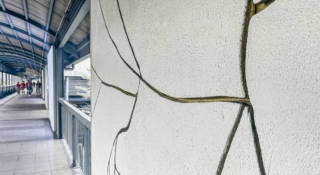The Philippine Stock Exchange index (PSEi) dropped below the 7,900-technical support level recently, strengthening the conviction of bears in arguing why the market will continue this way and why smart investors must stay away.
One of the most convincing arguments as to why the market should continue its slide is that stocks are still expensive. According to the bears, the PSEi traded at an average price-to-earnings ratio (P/E) of 15.4 times during the past 10 years. Even after falling by more than 10 percent, the PSEi is still trading at 16.5 times the 2018 P/E—a premium to the 10-year average. If we were to use 15.4 times as our target P/E, the PSEi’s fair value would be 6,900-7,000, still significantly lower than where it is currently at.
While some use the five-year average P/E of 18 times instead of the 10-year average P/E to value the index, the bears believe this is wrong because interest rates today are much higher compared to the five-year average, justifying a lower target P/E. Therefore, using the five-year average P/E is no longer correct.
In my opinion, the argument of the bears is too simplistic.
Using the 10-year historical average P/E to value the index would be appropriate if the 30 companies belonging to the PSEi basket and their weight 10 years ago have not changed. These factors are rebalanced every six months.
For example, in 2008, PLDT (TEL) accounted for 33 percent of the PSEi. Today, PLDT’s weight in the PSEi is down to 3.9 percent. On the other hand, consumer, banking and property companies like SM, SM Prime, Ayala Land and BDO now account for a bigger share of the index at a combined 37.7 percent. Given that consumer, banking and property companies naturally trade at higher P/Es compared to utility companies like PLDT, the PSEi’s P/E will really be higher today compared to 10 years ago.
Instead of trying to compute for the appropriate target P/E for the PSEi, we just focused on determining whether or not the companies belonging to the PSEi are still expensive to know for sure whether or not the market in its entirety is expensive.
Our objective is to find out which among the 30 index members are still trading at a premium compared to their respective historical average P/Es. To avoid any potential arguments with the bears, we used the 10-year average P/E of each company.
Based on our study, only seven out of the 30 index stocks are still currently trading at a premium to their 10-year average P/Es, namely SM, SM Prime (SMPH), BDO, Meralco (MER), Universal Robina (URC), Jollibee (JFC) and Security Bank (SECB). Moreover, three out of the seven—SM, SM Prime and BDO—are index heavyweights that together account for 29.3 percent of the PSEi.
Our conclusion is, at the 7,700 mark, the Philippine market is no longer expensive.
This is because 22 out of the 30 index members are currently trading at par or below their 10-year historical average P/Es. Although the PSEi is still trading at a premium to its 10-year historical average P/E of 15.4 times, it is only because the members of the index are now tilted more towards sectors that naturally have higher P/Es, and three of the largest capitalized index heavyweights are still trading at a premium relative to their 10-year historical average P/Es.
While attractive valuations are not enough to fuel a stock market recovery, it should make investors think twice about being too negative. It is also an indicator that we are closer to the bottom of this correction rather than the top, so it doesn’t make sense for investors to still sell their positions at this point.
In fact, it should compel investors to start preparing mentally to buy stocks.


